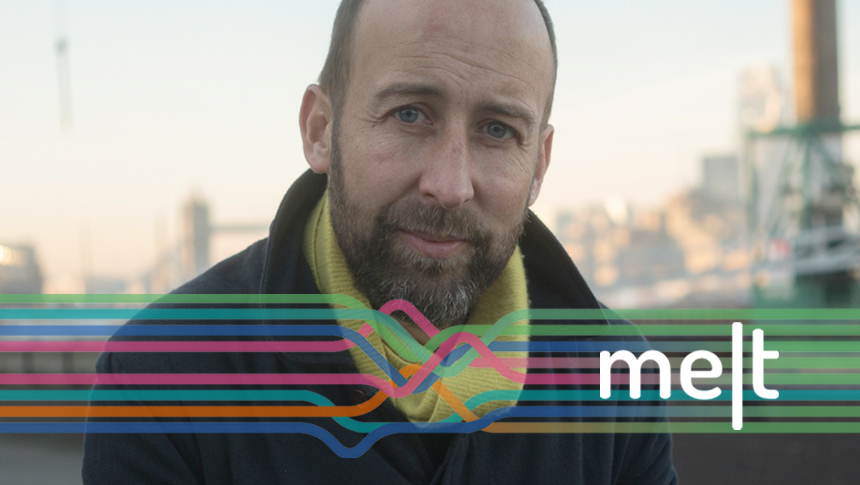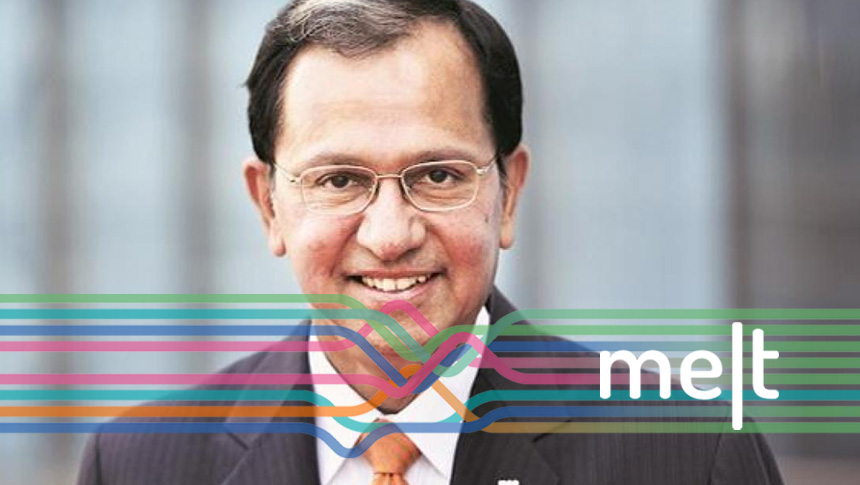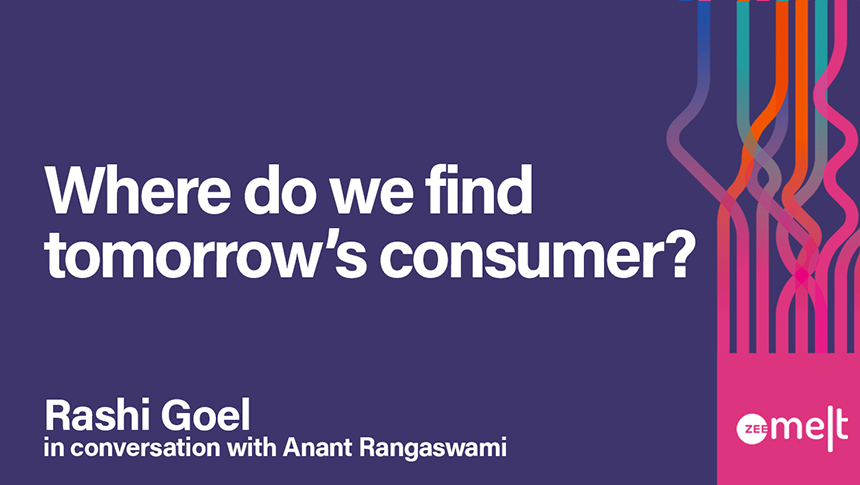Mahesh Gupta, a first generation entrepreneur, is the founder-chairman of Kent RO Systems Ltd. Gupta, an IIT graduate from Kanpur in Mechanical Engineering and an alumni of Indian Institute of Petroleum, Dehradun, began his early career in 1978 with Indian Oil Corporation CL. In 1988, he left his safe public sector job to turn entrepreneur and launch Kent RO Systems. Anant Rangaswami spoke to Gupta about the journey that has taken his firm to almost Rs. 1000 crore in 2017-18.
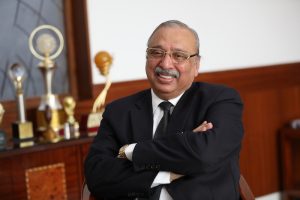
Guptaji, thank you so much for talking to us.
My pleasure.
So to begin with, why did you choose water purifiers as a business?
Well, I would say it came in as an accident to me. I’m basically a petroleum engineer.
Yes, from Indian Oil.
Yes, Indian Oil. So I came out and started my business in the oil sector. Made equipment that could test oils within seconds on the spot. We also came out with an oil flow meter to monitor consumption. But then, as it so happened, in 1998, two of my children fell sick with jaundice. I had never used a water purifier till then. So I thought I must buy one water purifier. I went to the market, and researched, but couldn’t find a water purifier that could remove soluble impurities in water. There were only UV purifiers that could take bacteria and virus out of water. But dissolved impurities are more dangerous. So since I couldn’t find one, and since I had an establishment, I thought, let me make one for myself by importing components from different parts of the world. So I made one for myself. And then I realized if I can’t find one, how are the other people going to find one in a similar situation? So I thought it an opportunity to take it up as a business, if possible, and then, serve people. That’s how this started.
Right. One of the big challenges when you chose this category of RO Water Purifiers is that it was much more expensive than other alternatives available.
Absolutely. It was a nightmare for me to sell this product. We were selling at Rs 20,000 in 1998, compared to normal UV water purifiers, priced at Rs 3000, from our competitors, the brand names supposed to be synonymous with the product. And you can imagine how tough it was to convince a consumer for a Rs 20,000 product, compared to a Rs 3000 product. So it was a really big task.
Even after 20 years of business, my real problem is in educating consumers that they need to have better water purifiers.
AR: One of the biggest tasks form your earlier communication was the education of the consumer. You had to educate the consumer, and explain the benefits of the product. So what was the brief to your communication agencies, your advertising agency, etc.?
I’ll tell you one thing — it’s a problem even today. Even after 20 years of business, my real problem is in educating consumers that they need to have better water purifiers. And that was the most serious problem at that time. And we knew that unless people can experience it, they wouldn’t buy it. And that is why we had to communicate. Even today, we feel that the experience is the main thing that needs to be taken to the consumers. Unless we have a nucleus of consumers, I would say 5% of the mass audience, this product won’t spread fast. And that remains a challenge even for me today.
And one of the things you are doing through your advertising even today is also a lot of mass contact programs, where it’s experiential marketing. So tell me how do you go about that?
See, how did I establish a Rs 20,000 product versus a Rs. 3000 product, and without advertising (in the early days)? By going to homes and getting people to use this water purifier, and getting them to understand how this product was a better one. And once they started using it, even those small numbers of consumers said that they were very happy with the product, and then I realized that there was a big demand waiting to be fulfilled. And we still do that today. We ask people to come and experience it, and then, they find the difference. See, a water purifier has two benefits, the purity, and the taste. I’ve never sold this purifier on the taste of water. Because purity cannot be seen, it cannot be experienced. Purity will come at a longer time. But the advantage purity offers to you is tasty water. The moment people drink this water, they can’t drink any other water. Because it’s so pure. People like to carry this water from their homes to offices. Like they carry their food, they carry this water.
So let’s trace back to the foundations of your brand building. You are now spending anything between 10% to 15% of your P&L on brand building. And that’s a reasonable figure, not a high figure. And still, a lot of your money goes to print. In the early days, it made sense to go for print since you didn’t have a large budget or a national footprint. Why do you still use print heavily? You’re probably one of the biggest print advertisers in the country today.
Yes, we do use a good amount of money on print. You can build awareness on television, but to educate, you still need to go in to print. Although one can go to digital, and we are on the web, and people can go online to check the benefits of the product faste. Still, if you go to Tier-II and Tier-III cities, the infrastructure is still not internet-friendly. When it comes to reading and understanding the benefits of the product, we still feel that print is working. I spend good money on national print media, and also in the Tier-II, Tier-III and other local languages.
We do use a good amount of money on print. You can build awareness on television, but to educate, you still need to go in to print.
One of the questions I ask all marketing companies who spend heavily on print… How do you know it’s working?
Well, for me it’s very easy. Why so? Because, the moment people get enquiries, we come to know it’s because of print. Enquiries to our call centers don’t come from television so much as they come from print. And we come to know that if we’ve released an ad in Kolkata, we get more enquiries from Kolkata. If we get an ad in Chennai, we’ll get more enquiries from Chennai. So we come to know that print is working because people are reading it and calling us for a demonstration. So that’s the feedback.
Do you have a methodical way of figuring out if one particular campaign is working, or one particular newspaper is working better?
It’s very difficult to find out. We do a little bit of research in terms of enquiry buildup, but it’s very, very difficult to find out.
Tell me, how do you break up your marketing spends? So much on TV, so much on print, so much on digital? What do you use each medium for?
It’s a million dollar question. I keep asking this question all the time. But over a period of time, we have come to know that 50% will go into television, 30% will go into print, and around 20% for digital. And some part, this is not inclusive of BTL activities, which I’ll peg at around 10%.
BTL is important…?
A little bit. It’s only display at the retail outlets. We have to spend on glow sign boards. So that takes about 10%.
Now, you started off with water purifiers, which was provoked by jaundice that your children suffered from. Now after you established Kent as a brand, you launched into a whole range of other products. And there must be some logic behind it. As an example, why did you get in to air purifiers? Now I learn you’ve got a noodle-making machine, for example. What causes you to decide on a new product category, and what gives you the courage to go with it?
The moment we established water purifier over a period of time, I would say our main campaigns started around 2006. Since then, we have been growing very steadily at 15%. At some point, we had to step back and decide what we stood for and what we wanted to be. We decided that we would make ourselves a “house of purity”. All our campaigns today say, “Kent, The House Of Purity”. And when I talk purity, certainly water purification is one aspect. Simultaneously, air purification is equally important. Then we said, food purification. We know that contamination of food is spoiling all our vegetables, and cooking habits. So we want to clean those things. Then, healthy food. So the noodle maker as you said, is looking towards the health aspect of purity. We’re going to continue with this trait of purity.
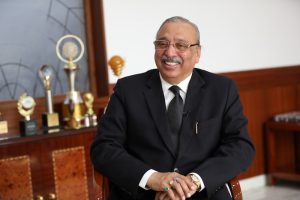
Do you back this with research, or is it your own instinct that decides where to go?
Well, I think… I don’t have to tell anybody or research to know that air is getting contaminated. There’s so much noise in media. We know there was a noise about noodles, the Nestle issue. So we know there was an issue of contaminated noodles. So I don’t have to do research. It’s written on the wall. There are issues, and we take up those issues.
And the whole marketing thrust in Kent Water Purifiers was fairly apparent. You used print for education, TV for brand building. What about the other categories? Are you using the same formula?
Yes, I think by and large. Each category doesn’t exist. We need to evolve the categories, and we need to educate the consumer. These aren’t me-too products. We have to create a demand. And the moment we have to create a demand, there is a need for the strategy to not just build brand awareness, but to educate the consumer about the product and its benefits through print, and then go for on-site demonstrations. So unless you do all three of them, you can’t sell these concept products.
You chose Hema Malini as a brand ambassador. That was 2006, I think…
2005, actually.
All business to my mind happens because of gut feeling.
Yes, 2005. Now that’s a 12-13 year relationship. And that’s not normal in India, for a brand to have such a long relationship. First I want you to explain the choice of Hema Malini. You could’ve chosen someone from 100 Bollywood stars. Then, why do you choose to stay with her? Again, is there some measurability that tells you this is working?
Okay. So first, why did I choose Hema Malini as my brand ambassador? I would say I’m lucky to have her. A lot of persuasion to have her. We were looking for someone who is a housewife. We were looking for someone who is a celebrity, someone who is very popular, and who can convey that a water purifier is good for you. And then we thought, we shortlisted, and found that she fitted the role very well. When we approached her, she said, “I don’t know your products. How can I endorse them?” So we had to persuade her for four to five months by giving her samples of the product. Once she was convinced, we started the journey. The second question regarding why we’ve persisted with her, I see no problem. It’s simple. She’s still popular, she’s still in media, she still dances very well, and she’s an MP, very active in politics. People still love her. Her longevity has not reduced at all. She still looks very young, very energetic. I think all the facets are there with her.
Back to the measurement question. How do know it is working? How do you know Hema Malini is working for Kent?
Well, I think I’ve never seen a negative reaction from anybody. That’s one. Second, we continue to grow. What else do you want? Why do you do a campaign? Because you want to be popular. Why do you want to be popular? Because you want to increase sales. If this is working, I have no reason to believe that she isn’t working. You can always say that in terms of measurement, someone else will work better. But then, we are happy. What we spend, we get. So we’re happy.
Guptaji, you are almost the archetypical family run business, where you do not care too much about measurement. That’s the sense I’m getting. You go by gut instinct where you say, this is how I feel. Those are the words. Am I right in saying that?
To some extent, yes, but not a 100%. We do get our surveys done. Our agencies regularly survey whether our decisions are working or not. But it’s not the predominant method of decision-making; I’ll put it like that. And in any of the research, there’s nothing negative that’s come out. My real problem is when somebody says that Hema Malini is not working. And I say, no, she is still working. Then there is a debate. Then decision-making is to be done. But they come out with the same result and I also get the same result from my gut feeling. Then there is no debate to it.
So how important is gut feeling to you?
Well, all business to my mind happens because of gut feeling. If I ask you a question, do you make a decision first, or analyse first? In my analysis, any person taking a decision first takes the decision and then justifies the decision by analytics. But the decision has to come from the gut. A businessman who can’t make a decision from the gut, and further wants to make a decision, needs to heavily justify the decision. That’s the purpose of analysis. To help understand whether it’s the right decision or not.
When we had to envision or ourselves, how do we move forward? We thought we would make ourselves a house of purity. All our campaigns today say, “Kent, The House Of Purity”.
Now, one of things that intrigued me that I haven’t seen or read in any article is the name Kent. Where did it come from? It has nothing to do with your name, your family name, where did the name come from?
Well, it happened to me, and it has become successful today. But let me give you the genesis of the name. As I told you, I started with oil flow meter. We made our first oil flow meter in 1991, in association with a company called Kent Meters Ltd, situated in Luton. Subsequently, Kent Meters was taken over by Elster Metering, and then, by Honeywell. Now, since we started making with the Kent Meters name, I wanted to continue with that. And those companies said that Kent is a county in the United Kingdom, it’s not a brand. So if you wish to continue, you can do that. And when I started my water purifier, I had to have a brand. The Kent oil meters were famous at least in the oil sector, so I thought, let me continue with the brand. That’s how the brand has come up.
Now, go back a little bit to your personal history. You are an engineer from IIT. And then you worked with Indian Oil, and then you became an entrepreneur. Now, normally, people who join Indian Oil, they retire from Indian Oil, because it’s a fantastic company and you could have become, say, Executive Director by the time you retired. So, why the need to take the jump and get out of a wonderful, comfortable, public sector job?
Well, to me, only a comfortable job is not something that satisfies myself. I love challenges, and I do have entrepreneur skills. And those skills within me prompted me to come out and do something better. Not only to earn for myself, but also do well for the society.
Talking about the things you love, one of them is sport.
Yes.
What is your fascination with sport? How does it help you with your work?
Well, I think one of my fascinations with sport that the public doesn’t know about is the game of bridge.
Wow. (Laughs)
(Laughs). I’ve competed in a national championship many times. Before the water purifiers, I’ve been a bridge player since my college days. I’ve competed at the best tournaments in India. So my love for sport stems from bridge. Why do I enjoy it? Because it’s a game which tests your skills in analysis. It tests your mind.
And your gut.
And your gut! (Laughs) Both the things. And I owe a lot of my personality to that game. Certainly. I also love cricket, although I’ve never played cricket. I love to be part of the game. On a holiday, I love to watch the game. I did that on Republic Day. It keeps you out of the routine job, your mind is working all the time, but the moment there’s a sport, it takes some rest and gets in to the sport.

What about using sport to build your brand?
Yes! Cricket is a medium. We have also been sponsors of kabaddi, and even the football team, Delhi Dynamos. I’ve used the platforms. These are mass media platforms in terms of popularity.
Again, what do you believe it does for the brand? Is it just a mass media? Is it just the reach?
Well, I don’t think it’s just the reach because people who love sport, and then look at your brand, always have a better recall of your brand. Number two, the eyeballs are there. If eyeballs are there, and you are there, it helps.
Guptaji, you grew up as a family-run business. It was your business. And now, you’ve partnered with Electrolux, one of the appliance majors in the world. You are fighting in the marketplace with some of the biggest multinationals. What brought you to think that you could fight with these people, and win?
Well, I don’t think I’m fighting these people. I’m here for a cause, and I’m here to fulfill that cause. And if I have a better proposition, I will succeed. I never look at whether I have to surpass Brand A or Brand B. I look at myself. I look at what I have to deliver to people – be it clean drinking water, clean air. And I do the basics correctly, and it’s the love of the people that takes my brand forward. But I never try to put my numbers there, that I must overtake a particular brand, or I must do this percentage. What comes to me is the result of what we do.
We spoke about continuity in Hema Malini. Very unusually, also, you have continuity in your communication partner. You’ve worked with Law & Kenneth (now L&K Saatchi & Saatchi) for a long time, uninterrupted, in an era where people don’t usually have long relationships.
Well I would say my relationship not only with Law & Kenneth, but my relationship with all my partners is a long term one. I don’t look at plus or minus 5%. So efficacy maybe down a little bit. But if you have a long relationship, you can sleep better and not worry. Otherwise, if you make a new relationship everyday, your mind will always work on nurturing the relationship. So once I’ve nurtured a relationship, I’d like it to be stable, unless I find it’s a negative relationship. But if we are a fast moving brand, those people also spend their time to let us move forward. Till they are doing that, I don’t think I’ll change my business partners easily. You can look at my suppliers. They haven’t changed. I like them to grow with me, and they are growing with me. I would like to maintain a stable atmosphere where the focus is on delivering to the customer, rather than check the efficacy for each partner. That’s my philosophy.
Now coming to a narrow world of communication. Your agency partner, media partner, so on. How does the relationship work?
It works like it works everywhere. We give them a brief. They understand what we need to do. So we communicate, and find where we need to go in the future. And communications, media selection, is built according to that.
Now when you spend about 15% of your P&L on advertising, it’s a high focus area for you. How much time do you personally spend on media and advertising?
I think I spend quite a good amount of time on this. We have brand managers and marketing managers, but I overtake their roles in terms of the strategy buildup.
So typically in a day, how much time?
I don’t think I measure that. (Laughs) We are very poor in measurement. (Laughs) Whatever is required, I do that.
What is your typical day like?
Well, a better part of my time is spent always on development of new products. I’m an R&D person, a scientist, an engineer by profession and I keep spending time with my researchers on what we can develop for people, and how we can deliver it better. The new areas that we should be looking at. That’s where I spend most of my time.
Now that you’ve defined that Kent will be the house of purity and that is vision that wherever you will expand, it will be in the business of purity. So, what areas are you looking at?
As I said, water is one. We will remain there and will continue to find better solutions. Air is one, and it’s another one that will require focus. Then, food, because that is one area that’s not very pure right now. Even our cooking habits aren’t very pure. There are a lot of diseases that come to our body, and we would like to have cooking methods which are much more healthy, with use of less oils, and appliances that help cook healthier food.
When I talk purity, certainly water purification is one aspect. Simultaneously, air purification is equally important. Then we said, food purification.
So these will be home-developed products?
Yes. All of my products are likely to be home developed. That’s where we are focusing. Our R&D center is very strong, and we want to deliver something unique to the people.
Guptaji, while you say that you’re not as bothered about what brand A or brand B is doing, surely that’s an area that gives you an idea of your success or your relative success, when you say you’ve outsold brand A or done worse than brand B or something like that. So, how do you come to that? When you say it doesn’t matter, surely it matters, doesn’t it?
No, I’m not saying it doesn’t matter. I’m saying that I don’t look at my percentage share in the market to that level. We don’t want to get in to competition and lower our price just to complete this month’s topline. For me topline is not important. Even bottom line is not important. What is important is delivery. How the consumer is benefitting from my delivery. If the consumer benefits, my bottom-line is protected. I know that for sure. And I also know for sure that I will continue to lead if I continue to do better for the consumer.
So now you’re a leader in the RO market certainly, but not in the entire water purifier market. Where do you see Kent going in that market?
Well, the RO purifier is the best purifier. There is nothing better than that today. It’s the ideal solution. So we are also pushing RO purifiers. If UV purifier had been the best, maybe I would have pushed that much more. So the future category would remain the RO category, where we’ve built up our strong relationship.
Now Guptaji, to get to a certain macro-finance issue, with GST, organized companies such as yours clearly see a benefit. How do you view GST and the impact it has on your business?
See, it’s more of ease of doing business. In terms of a benefit to consumers, it’s not happening. In terms of doing business, it’s certainly helping in the sense that our business partners, our dealers, our direct selling agents, they all aren’t confined to one state. Now they can offer services all across. And it’s one taxation instead of multiple taxation. So it provides an ease of doing business, in my mind. And it’s a very welcome step.
Now, you’re saying that it’s not a benefit to the consumer. Would you like to see a benefit to the consumer out of the GST?
Well, the benefit to the consumer will not come from GST. Well, if the government does reduce the taxation, the benefit can from GST too, but the government has not reduced taxation for the water purification sector, it has remained the same. So it doesn’t come as a benefit to the consumer. And the benefit to the consumer will come in the future only once the volume builds up. As I said, the penetration of RO purifiers is only three percent. The moment it comes to 10% of penetration, which is the figure for washing machines or so, I think the prices will further come down. As you see, in 1998, it was Rs 20000. The value of that Rs 20000 in today’s time would be Rs 60000, but we’re still selling at only Rs 15000 or so. That means the prices in real terms have come down for water purifier. And they will further come down when the volumes are higher.

You know, your price point for your RO water purifier, when it was launched, was challenging because it was almost questioning whether there is a market for a premium appliance. It’s one of the most expensive appliances you can get, even more expensive than washing machines. So what gave you the courage to think that people would pay so much money for something they’ve never heard of before?
It’s delivery. Whether you want to get sick and then be treated, or whether you want to prevent your sickness. So people realised that it’s better to prevent than to cure. And the moment started using it, they understood the benefit. So that’s what I said. I still put it up. It’s the experiential marketing, which will help us better rather than just advertising.
So is the Indian market getting mature enough to buy a premium product that has an obvious delivery?
Actually, the things have moved on. In twenty years, we have seen the migration to the Internet, and people are much more digitized, and can do research to find out what’s good and what’s not good, and why it’s good. And that’s why people get into premium product range. The disposable income in India is also rising at the moment, and so is the aspiration. So in my mind, premium products do have a value here in India, and that value is only bound to grow as the economy develops further.
Tell me, what is your view of the Indian consumer today? What is your picture of the Indian consumer? Explain him or her to me.
The Indian consumer has become much more intelligent today. You can’t fool the consumers as you could do in the past. Only brand building will not help to market your products. You may get to a temporary position. But in a period of time, if your brand isn’t delivering what you promised, it will not deliver. So brand building has to be combined with what you promised to the consumer. Only then you will exist, otherwise not.
So tell me, Kent RO Systems, the company; five years from now, what will the company look like? What will the face of the company be? In terms of turnover, product width, etc.?
I think Kent will continue to grow at 15% (annually) in the future as well, if not more. And, we will certainly double our turnover. We will be present in water, air, and food products. And we’ll be a dominant player in water purifiers. I don’t think any company at the moment has a capacity to overtake us in the future because we have very strong products in the pipeline. So I feel that I will be the face of water purifier systems in the country, with people simultaneously knowing that we are into air, we are in to food, and that we are in the space of purity.
Guptaji, you were telling me that your company is built on innovation. Expand that please.
Well I think innovation has happened in product. We have a lot of patents. Then, there is delivery to the consumer. How the product is going to benefit people. But it’s not only the product. Innovation goes into marketing, it goes into innovation of TVCs, media selection, and how we present our products to the dealers…
I don’t look at plus or minus 5%. So efficacy maybe down a little bit. But if you have a long relationship, you can sleep better and not worry.
Could you expand on innovation in media and advertising?
See, in media and advertising, we took on one high ground, and we continued to focus on that high ground that “Kent deta hai sabse shudh paani”. Now, that’s a delivery that we’ve established over a period of time. Why? Because our campaigns may look very simple. It’s just Hema Malini delivering one sentence, without a story. So people may find it boring. But one sentence, “Kent deta hai sabse shudh paani” has gone into the mindset of people over a period of time. So when they think of purity, of pure water, they think of Kent. That’s a great innovation that we’ve done over a period of time.
Next, media selection. You cannot believe that we don’t do campaigns. We do a continuous bombarding in media. We’ve been doing this for ten years. Bombarding means, sometimes high pitch, sometimes low pitch. But we’ve not gone off the air for a single day. We believe that public memory needs to be constantly fed with the proposition, and that is how it will remain with them. So we have done a lot of innovation with media selection.
Then, selecting our network. We have not left any network where we can reach, whether it’s retailers, direct marketing, digital marketing, or even shops that are big stores. We want to be present at every ground where a consumer can come, and can experience our product. So we have built up an experience at all such points to help sell our products, and to experience our products.
Let me tell you about innovation in servicing. When we came up, our competitor said, “No, this company won’t remain there. If you buy for five years, they won’t be able to provide service.” Today, our innovation in servicing is very high. We use a technology where people get their products serviced in two hours! So unless you innovate, you can’t be a leader. That’s my belief. And I believe that we need to innovate even from where we are today. If we rest today, we won’t be future ready. So we’re innovating on what we have to do after five years, or after two years. Innovation is the way of life at Kent.
Where does this innovation come to you from? Is it your background as an engineer that provokes you to innovate all the time?
Well, I think innovation is asking a question to yourself all the time. And I tell people across all our areas to question themselves on how they can do better. The moment you start asking that question, some answers will come. And then, you just need to shorten the list to what the best answers are.
There’s one word you used there in passing, and that’s patents. You said that Kent has a lot of patents. So, what are the patents you have, and how do you monetize the patents?
I think we have monetized all these patents, because all my patents are not only for the sake of getting a patent. We have the patent to remove minerals in water. As you know, Reverse Osmosis (RO) process removes what is dissolved in water, so it also takes out minerals. So a need arose to retain minerals in water. Then we came out with a patent that helps save water in a RO purifier. Then we came out with a patent to make gravity purifiers. We have a patent that electromagnetically measures the RO systems, and to analyse when to change filters. Even that has come out to the market. So all my patents are based on the products that come out in the market, and then, all the designs of the machines. Our designs are unique in the world, because we design a product, which is suitable for the Indian consumer, rather than come out with a foreign design, which is there for the product.
For me topline is not important. Even bottom line is not important. What is important is delivery. How the consumer is benefitting from my delivery. If the consumer benefits, my bottom-line is protected.
Now, though Kent is known for water purifiers, what is the total number of SKUs across the product categories?
Well, in water itself we have 17 products. Once we launch all our kitchen appliances and air purifiers, we would have 30 SKUs.
So is there room to have a whole range of Kent showrooms across the country?
Well, that’s not an ideal thing to have. We will have an experiential center where people can come in and see the products. But I don’t think we can sell only through Kent exclusive stores. We would like people coming to buy anything else to experience our products as well. So we like to be in multi-product stores.
Normally, it’s a temptation. When you have more than 30 SKUs of high value, you would like to have your own store.
Well, I think we are Apple. Well, even Apple today doesn’t sell only through exclusive stores. People would like to buy this wherever they go, rather than search for a store where it’s located.
How much do you invest in the training of your sales and marketing staff?
I would not be able to give you numbers, but it is a very important criteria for us, and we want to develop talent. But today, training is also done through e-mails, through our communication or digital platforms. Whatever we have to say, we convey through video. And then, print. We still depend on print, because the feel of a print publication is much better than any digital. You can see our catalogue, one of the best for consumers to look at. People didn’t think of large format catalogues, but we did come out with such catalogues, which are placed at stores. People love those. So we are people who are trying to innovate again, on how to present your brand to the consumer.
We do use a good amount of money on print. You can build awareness on television, but to educate, you still need to go in to print.
You’ve got now three production units across the country. So, how do you break up the manufacturing of the various product ranges, and where does it go from here?
Let me tell you, we are a company, which is backwards integrated. Our products are not coming from foreign countries. We do a backward integration where we make each and every component ourselves. And we have a state of the art facility in Rourkee, on a 5 hectare plot, and 5 lakh square feet of area, backed up with a strong R&D centre, because we want to give high quality products to the consumer. These manufactured in-house, and we have total quality control. The idea of this manufacturing facility coming up, and operating, is a long-term idea. It’s not a short-term vision, even to the consumer. And these manufacturing facilities will not only help the Indian consumer, but will also hope the export of our products to different countries. Because they too have a problem of water. So we don’t want to just take the space here in India. We want to take the space throughout the world, and make our footprint there as well.
So right now, are your water purifiers being exported significantly?
Yeah, yeah. About 5% of our turnover comes from exports, and over time, this will grow. We are prominent players in Nepal, Bangladesh, Sri Lanka, and we’re capable and interested in extending our reach in Indonesia, Vietnam, and we’ll also go to Africa, in due time.
And other than water purifiers, what else do you see for other products the purity range?
Absolutely. We are going with our winner to begin with, but we’ll expand into other areas as well.
